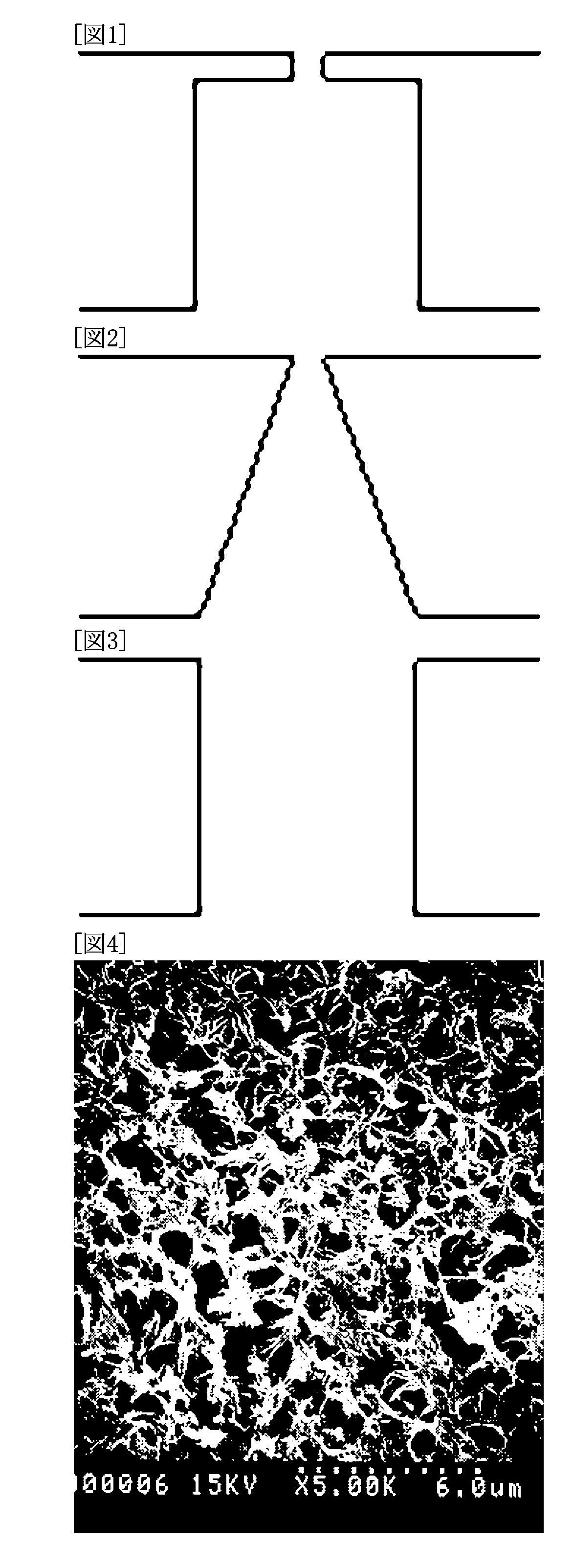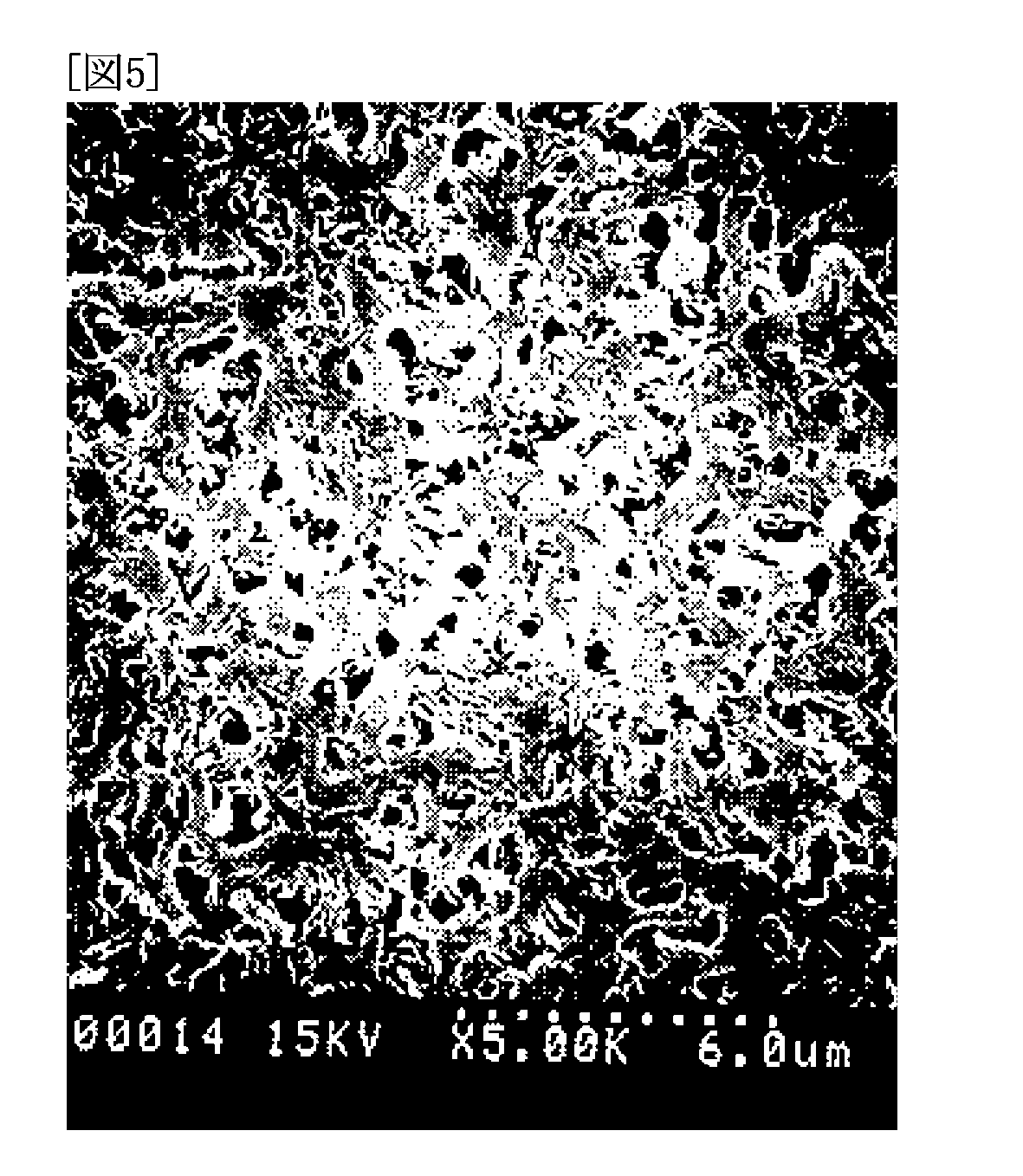Polyvinylidene fluoride hollow yarn type microporous film and process for production of the same
a polyvinylidene fluoride and microporous membrane technology, applied in the direction of membranes, separation processes, filtration separation, etc., can solve the problems of reducing the water-permeable resistance of the membrane, requiring a small facility and a proportional operation cost, and a large water purification plant. , to achieve the effect of reducing water-permeable resistance, excellent separation performance, and high permeability performan
- Summary
- Abstract
- Description
- Claims
- Application Information
AI Technical Summary
Benefits of technology
Problems solved by technology
Method used
Image
Examples
example 1
[0060]20 wt % of a polyvinylidene fluoride resin (SOLEF6020®; Solvay) was dissolved in 80 wt % of diethylene glycol monoethyletheracetate by stirring under nitrogen atmosphere at 148° C., thereby obtaining a high temperature dope. The obtained high temperature dope was ejected from a coaxial double-slit spinneret together with triethylene glycol, which served as a hollow-portion-forming agent. Through an air gap of about 15 mm, the dope was led to a cooling bath consisting of a 10° C. aqueous solution containing 60 wt % of diethylene glycol monoethyletheracetate to be solidified. The resulting fiber was wound at 5 m / min to obtain a hollow fiber membrane. The obtained hollow fiber membrane was washed with water to completely remove the solvent, and then dried to obtain a hollow fiber membrane 1.3 mm in outer diameter and 0.7 mm in inner diameter.
[0061]The hollow fiber membrane was observed with a scanning electron microscope (an SEM, hereinafter). A net-like structure was seen in the...
example 2
[0065]25 wt % of a polyvinylidene fluoride resin (SOLEF6020®) was dissolved in 75 wt % of diethylene glycol monoethyletheracetate by stirring under nitrogen atmosphere at 159° C., thereby obtaining a high temperature dope. The obtained high temperature dope was ejected from a coaxial double-slit spinneret together with triethylene glycol, which served as a hollow-portion-forming agent. Through an air gap of about 15 mm, the dope was led to a cooling bath consisting of a 10° C. aqueous solution containing 40 wt % of the diethylene glycol monoethyletheracetate to be solidified. The resulting fiber was wound at 5 m / min to obtain a hollow fiber membrane. The obtained hollow fiber membrane was washed with water to completely remove the solvent, and then dried to obtain a hollow fiber membrane 1.3 mm in outer diameter and 0.7 mm in inner diameter.
[0066]The hollow fiber membrane was observed with an SEM. A net-like structure was seen in the cross-section of the membrane, and there were no ...
example 3
[0067]The same process as in Example 2 was performed to obtain a hollow fiber membrane 1.3 mm in outer diameter and 0.7 mm in inner diameter, except that the concentration of diethylene glycol monoethyletheracetate in the cooling bath was 20 wt %.
[0068]The hollow fiber membrane was observed with an SEM. A net-like structure was seen in the cross-section of the membrane, and there were no 10 μm or greater macrovoids. A dense layer was formed on the peripheral surface with a depth of about 1.5 μm, and a homogeneous bulk layer was formed in the rest of the depth of the membrane to reach the inner surface. The porosity A of the bulk layer was 39%, and the membrane surface porosity B of the peripheral surface was 8%; that is, A was 4.9 times B. It was observed that the dense outer layer changed substantially discontinuously into the bulk layer. The pure water permeability was 24.1 m3 / (m2 per day) / 100 kPa at a water temperature of 25° C. The rejection of the Uniform Latex particle 0.039 μ...
PUM
| Property | Measurement | Unit |
|---|---|---|
| thickness | aaaaa | aaaaa |
| porosity | aaaaa | aaaaa |
| porosity | aaaaa | aaaaa |
Abstract
Description
Claims
Application Information
 Login to View More
Login to View More - R&D
- Intellectual Property
- Life Sciences
- Materials
- Tech Scout
- Unparalleled Data Quality
- Higher Quality Content
- 60% Fewer Hallucinations
Browse by: Latest US Patents, China's latest patents, Technical Efficacy Thesaurus, Application Domain, Technology Topic, Popular Technical Reports.
© 2025 PatSnap. All rights reserved.Legal|Privacy policy|Modern Slavery Act Transparency Statement|Sitemap|About US| Contact US: help@patsnap.com


